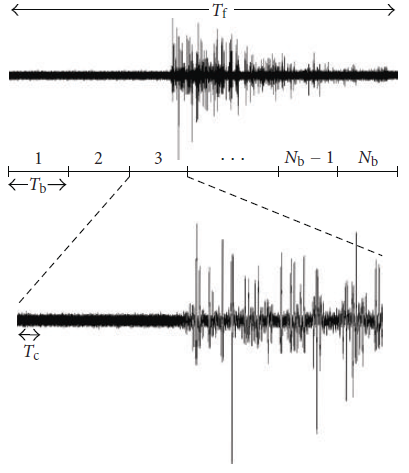TR2008-094
Two-Step Time of Arrival Estimation for Pulse-Based Ultra-Wideband Systems
-
- , "Two-Step Time of Arrival Estimation for Pulse-Based Ultra-Wideband Systems", EURASIP Journal on Advances in Signal Processing, DOI: 10.115/2008/529134, Vol. 2008, December 2008.BibTeX TR2008-094 PDF
- @article{Gezici2008dec,
- author = {Gezici, S. and Sahinoglu, Z. and Molisch, A.F. and Kobayashi, H. and Poor, H.V.},
- title = {{Two-Step Time of Arrival Estimation for Pulse-Based Ultra-Wideband Systems}},
- journal = {EURASIP Journal on Advances in Signal Processing},
- year = 2008,
- volume = 2008,
- month = dec,
- doi = {10.115/2008/529134},
- url = {https://www.merl.com/publications/TR2008-094}
- }
- , "Two-Step Time of Arrival Estimation for Pulse-Based Ultra-Wideband Systems", EURASIP Journal on Advances in Signal Processing, DOI: 10.115/2008/529134, Vol. 2008, December 2008.
-
Research Areas:

Abstract:
In cooperative localization systems, wireless nodes need to exchange accurate position-related information such as time-of-arrival (TOA) and angle-of-arrival (AOA), in order to obtain accurate location information. One alternative for providing accurate position-related information is to use ultra-wideband (UWB) signals. The high time resolution of UWB signals presents a potential for very accurate positioning based on TOA estimation. However, it is challenging to realize very accurate positioning systems in practical scenarios, due to both complexity / cost constraints and adverse channel conditions such as multipath propagation. In this paper, a two-step TOA estimation algorithm is proposed for UWB systems in order to provide accurate TOA estimation under practical constraints. In order to speed up the estimation process, the first step estimates a coarse TOA of the received signal based on received signal energy. Then, in the second step, the arrival time of the first signal path is estimated by considering a hypothesis testing approach. The proposed scheme uses low-rate correlation outputs and is able to perform accurate TOA estimation in reasonable time intervals. The simulation results are presented to analyze the performance of the estimator.
Related News & Events
-
NEWS EURASIP Journal on Advances in Signal Processing: publication by Zafer Sahinoglu and others Date: December 1, 2008
Where: EURASIP Journal on Advances in Signal Processing
Research Areas: Communications, Signal ProcessingBrief- The article "Two-Step Time of Arrival Estimation for Pulse-Based Ultra-Wideband Systems" by Gezici, S., Sahinoglu, Z., Molisch, A.F., Kobayashi, H. and Poor, H.V. was published in EURASIP Journal on Advances in Signal Processing.